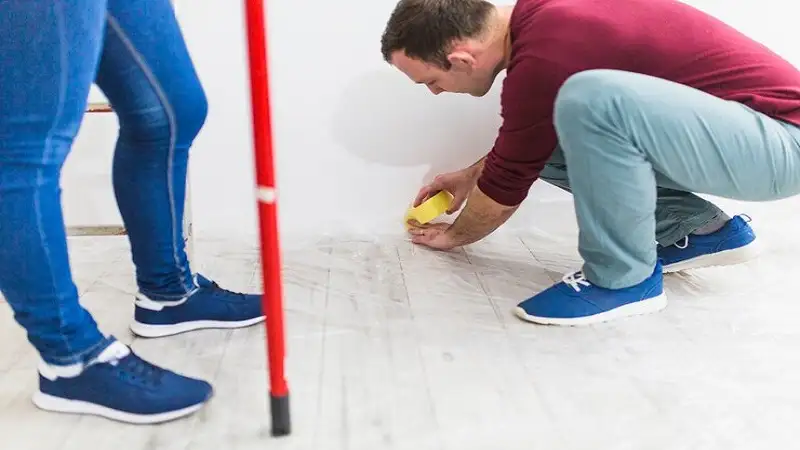Applying synthetic coatings to concrete floors is a fantastic way to enhance their durability, appearance, and lifespan. Whether it’s for a garage, warehouse, or residential living space, the right synthetic coating can transform a basic concrete floor into a robust, attractive surface. This guide will walk you through the process step-by-step, ensuring that you achieve a professional-quality finish.
Preparation: The Key to Success
Before you begin applying any type of synthetic coating, it’s crucial to properly prepare the concrete surface. This preparation involves several important steps:
- Cleaning: Start by thoroughly cleaning the floor to remove all dirt, grease, and existing coatings. You can use a power washer for outdoor areas or a scrub brush and industrial-grade cleaner for indoor spaces. Allow the floor to dry completely after cleaning.
- Repairing: Inspect the concrete for any cracks, holes, or imperfections. Use a concrete filler to repair these issues, following the manufacturer’s instructions. Again, allow adequate drying time.
- Etching: Concrete etching with a mild acid solution helps to open the pores of the concrete, allowing the coating to adhere better. After etching, rinse the floor thoroughly with water and let it dry completely.
Choosing the Right Coating
The choice of coating depends on the intended use of the floor and the conditions it will face. Epoxy and polyurethane are two popular types of synthetic coatings. Polyurethane floor paints, for example, are well-suited for areas that require a durable, abrasion-resistant surface that can also withstand chemical spills. Consider factors such as UV exposure, moisture, chemical resistance, and wear when selecting your coating.
Application: A Detailed Procedure
Once your surface is prepared and you’ve chosen the appropriate coating, it’s time to start the application process. Here’s how to do it:
- Priming: Many synthetic coatings perform best when applied over a primer. The primer helps to seal the concrete and improve the adhesion of the topcoat. Apply the primer with a roller or brush, covering the entire area evenly. Allow the primer to dry as directed by the manufacturer.
- Mixing the Coating: Synthetic coatings often come in two parts that need to be mixed before application. Follow the manufacturer’s instructions carefully to ensure the correct ratio and mixing technique. This is crucial for the performance of the coating.
- Applying the First Coat: Use a roller or sprayer to apply the first coat of synthetic coating. Start from one corner of the room and work your way towards the exit to avoid painting yourself into a corner. Apply the coating evenly and allow it to cure for the time specified by the manufacturer.
- Applying the Second Coat: Depending on the product and the requirements of the project, a second coat may be necessary. This provides additional thickness and protection. Apply the second coat in a perpendicular direction to the first coat to ensure even coverage.
- Finishing Touches: If required, a topcoat can be applied for extra durability and gloss. This is especially useful in high-traffic areas or where maximum longevity is desired.
Curing Time
The curing time for synthetic coatings can vary significantly based on the type of coating and the environmental conditions. It is generally recommended to allow at least 24 to 48 hours before using the floor lightly and up to a week for full cure. During this time, keep the area well-ventilated and avoid any moisture exposure.
Maintenance Tips
Once your coating is fully cured, maintaining the floor will ensure it remains in excellent condition for years to come. Regular cleaning with appropriate cleaners, immediate attention to spills, and avoiding harsh chemicals are all essential maintenance steps. Additionally, periodic checks for any signs of wear or damage will help in addressing issues before they become major problems.
By following these steps, you can successfully apply a synthetic coating to your concrete floor, enhancing its durability, appearance, and functionality. The process might seem daunting at first, but with the right preparation and attention to detail, you can achieve a finish that looks professional and lasts for years. Whether for a home, office, or industrial setting, a well-applied synthetic floor coating is a smart investment that pays off in both aesthetics and performance.

